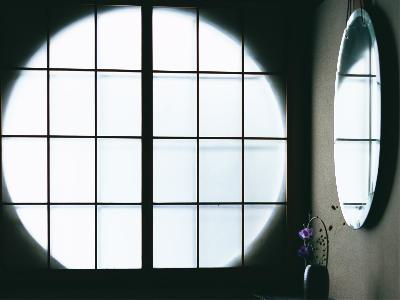In the western world, a house is looked upon as a wall that separates people from the nature, in order to protect the people. Japanese, on the contrary, see a house as an extension of nature, a place to unify with the nature and live together with it. This philosophy is apparent in the architecture style, and window design is also affected. If a building is a place to unify with nature, a window is where the outside and inside unites and where the nature and people connects. With a window, the greenness of a garden and blooming flowers can be seen and the breeze can blow in the house. In the day, a house becomes bright when sun light shines in and at night, moonlight beams in. There is so much behind window design so that people inside a house can come to enjoy the nature and unify with it further. Marumado is a typical example that embodies this concept. The window, a circular shaped with some pattern, looks like the moon or the universe. Despite the artificial window design, it facilitates the appreciation of the nature. This is a beautiful example that embodies the concept of co-habitation with the nature.



















